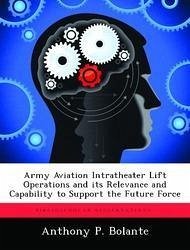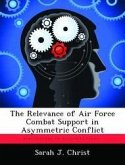US Army aviation is undergoing an organizational and doctrinal evolution in order to be a relevant and capable force in the contemporary operational environment and on the battlefields of the future. Aviation has traditionally provided a unique operational capability of providing, in the third dimension of airspace, the mobility, agility, logistics, sustainment, and ability to mass significant combat power at the right place and time in support of ground maneuver forces. However, recent and ongoing operations in Iraq and Afghanistan are being prosecuted in austere, remote, and noncontiguous theaters. These conditions have exemplified the importance of aviation's tactical and logistical support to the warfighter on the ground. The Army's organic intratheater lift fixed-wing and rotary-wing assets, specifically the C-23B Sherpa cargo airplane fleet and the CH-47D Chinook heavy-lift cargo helicopter fleet, have been heavily employed in the high operations tempo in Iraq and Afghanistan, and it has been determined that their legacy organizations and aircraft are not optimized to support protracted operations under such demanding conditions. This thesis focuses on analyzing the current and projected Army intratheater lift assets including the Future Cargo Aircraft and the under-development improved cargo helicopter program to determine whether Army aviation is headed down the right path to achieve operational success in the future. This study will also analyze the Army's projected aviation transformation organizational structure in order to make conclusions and recommendations to determine if the Army's intratheater fixed-wing and rotary-wing cargo assets will be relevant and capable to support the Future Force.








